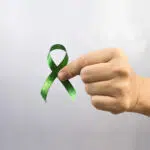Mary Prince Day is commemorated in Bermuda on the Friday before the first Monday of August, coinciding with the second day of Cup Match — a public holiday and annual cricket match between Somerset and St. George’s. This year, the holiday falls on August 1. The second day of the Cup Match holiday was previously named after Admiral Sir George Somers, who shipwrecked in Bermuda on July 28, 1609, which led to the founding of the English colony of Bermuda.
Since 2018, there had been a push to rename Somers Day to Mary Prince Day, so that Emancipation Day is followed by a holiday that recognizes a Bermudian who made an important contribution to the slave abolition movement.
History of Mary Prince Day
Mary Prince was born into slavery at Devonshire Parish on October 1, 1788. When her mother’s master died that year, Prince, her mother, and her siblings were sold as household servants to Captain Darrell. She had been sold three times since the age of 12. In 1810, Prince was returned to Bermuda, where her master had relocated with his daughter. She was physically mistreated by her master while she was here, but Prince stood up to him twice — once to defend his daughter, who he also beat, and again to defend herself when he hit her for dropping cooking utensils. After that, she was hired out to Cedar Hill for a time, where she washed clothes for her owner and earned money for him.
In 1815, Prince was sold a fourth time, to John Adams Wood of Antigua. When Wood was traveling, Prince earned money for herself by taking in washing and by selling coffee, yams, and other provisions to ships. She was baptized in the English church in 1817 and accepted for communion, but she was afraid to ask Wood for permission to attend. In December 1826, Prince married Daniel James, a former enslaved man who had bought his freedom by saving money from his work. He was a cooper and carpenter.
In 1828 Wood and his family traveled to London and took Prince with them as a servant. By that time, it was illegal to transport those that were enslaved out of England, but it did not make slavery illegal in the country, even though public opinion believed it did. Prince and Wood had increasing conflict here. They ended up giving her a letter that nominally gave her the right to leave but suggested that no one should hire her.
Prince sought refuge in the Moravian church in Hatton Garden after leaving the household. Within a few weeks, she began working part-time for Thomas Pringle, a writer and Secretary of the Anti-Slavery Society, which assisted black persons in need. Prince obtained employment with the Forsyths, but they left England in 1829. In 1829, the Woods left England and returned to Antigua with their daughter. Pringle attempted to have Wood manumit Prince for her to gain legal independence. He refused, which meant Prince could not return to her husband and friends without being re-enslaved and bowing to Wood’s rule as long as slavery was legal in Antigua.
After failing to reach an agreement, the Anti-Slavery Society considered petitioning Parliament to grant the Prince’s manumission. Prince had Susana Strickland transcribe her life story after being encouraged by Pringle. The work was released in 1831 as “The History of Mary Prince,” with Pringle serving as editor. Her first-hand account impacted many people at a time when the anti-slavery movement was rising. She testified in two libel cases in 1833. The Slavery Abolition Act was approved that year, and it went into effect in August 1834. In Bermuda, which was not reliant on slavery, emancipation occurred very soon after the law was passed in 1834.
Mary Prince Day timeline
Born into slavery at Devonshire Parish, her father is a sawyer owned by David Trimmingham, and her mother is a house servant held by Charles Myners.
Here, she joins the Moravian Church, attends classes, learns to read, and eventually is baptized and accepts communion in the English church.
Daniel James is a former slave who had bought his freedom by saving money.
That year, Wood gives her a letter that grants her the right to leave them, due to their constant conflict, but she is not set free.
Thomas Pringle, an abolitionist writer who helped Prince, tries to have Wood manumit her, but he refuses.
Prince's autobiography chronicles her life as a slave and is a huge success as the anti-slavery movement grows.
It goes into effect in August 1834, this includes Bermuda, which is not dependent on the institution of slavery.
Mary Prince Day FAQs
What countries did Mary Prince live in?
She lived in Bermuda, Antigua and Barbuda, the Turk and Caicos Islands, and England.
How does Mary Prince use religion?
In her book, Prince describes that the hand of God saved her from death after her friend was beaten to death by her master. She portrays religious slaves as righteous, and slave-owners as blasphemous tyrants.
Did Mary Prince have a child?
In her book, Prince never mentions having children herself, but since we don’t know what happened to her after 1833, there is a possibility.
How to Observe Mary Prince Day
Read “The History of Mary Prince”
There is no better way to understand her story than from Prince herself. Some editions include another brief account: “The Narrative of Asa-Asa, a Captured African.”
Visit Mary Prince Emancipation Park
If you have the opportunity to visit Bermuda, take advantage of it. The park was previously known as Devonshire Bay Park, the location of Prince's birth, but the name was changed in 2020.
Share your thoughts about Mary Prince Day
Outside of Bermuda inhabitants, many people are unaware of this day. Inform your friends and family about it and why you believe it is significant. Consider the impact her book had on the anti-slavery movement.
5 Important Facts About Mary Prince
Little is known of her after 1831
It’s known that she remained in England until, at least, 1833, but not whether she was freed or when she died.
She learned to read in church
She joined the Moravian church when she lived in Antigua and took classes.
Her floggings increased after marrying
This is because the Adams family didn’t want a free black man living on their property.
The holiday only became official very recently
It was only made official in Bermuda in 2020.
Prince was represented in a Google Doodle
This was on October 1, 2018, to celebrate her 230th birthday, it is significant because this predates the officialization of Mary Prince Day.
Why Mary Prince Day is Important
It’s an undervalued part of the fight against slavery
Many people are unaware of Mary Prince Day, or even Prince herself because it is a relatively new celebration. Her book, we believe, was crucial to the abolitionist movement, and her life should be remembered by everyone, not just Bermuda residents.
We still don’t know enough about Prince
As we’ve said, what happened to her after 1833 remains unknown. Historians should try to find out how the story of someone so important ended, and the more people learn about it, the closer we are to someone uncovering it.
It’s a day to reflect on slavery
Cruelty marked Prince’s life since her birth. But the truth is that while her efforts led to the abolition of slavery, contrary to what some people may think, it still exists in some form to this day. It’s important to be aware of it and the modern-day conditions that create it.
Mary Prince Day dates
| Year | Date | Day |
|---|---|---|
| 2024 | August 2 | Friday |
| 2025 | August 1 | Friday |
| 2026 | July 31 | Friday |


































































